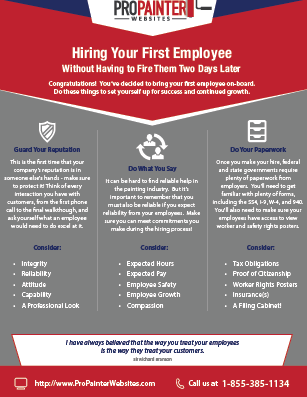Learn How Seasonal Variables Affect Commercial External Paint Success And Find The Best Times To Make Sure Long-Term Outcomes For Your Job
Learn How Seasonal Variables Affect Commercial External Paint Success And Find The Best Times To Make Sure Long-Term Outcomes For Your Job
Blog Article
Developed By-McLamb Celik
When you're preparing a commercial external paint task, seasonal variables can make or break your results. You'll wish to take into consideration how temperature level and humidity influence paint application and drying out times. Picking the best season can ensure your paint adheres effectively and lasts longer. Yet which house painting service near me are absolutely the best for this kind of job? Allow's discover the key elements that can impact your job's success.
The Effect of Temperature Level on Paint Application
When you're intending a business external painting job, the temperature level can substantially affect exactly how well the paint sticks and dries out.
Preferably, you intend to paint when temperatures vary between 50 ° F and 85 ° F. If it's too cold, the paint might not heal correctly, leading to issues like peeling or splitting.
On the flip side, if it's also warm, the paint can dry out as well quickly, avoiding appropriate adhesion and leading to an unequal surface.
You should likewise consider the time of day; early morning or late afternoon uses cooler temperatures, which can be extra desirable.
Constantly inspect the supplier's recommendations for the certain paint you're making use of, as they usually give support on the optimal temperature array for optimal outcomes.
Moisture and Its Impact on Drying Times
Temperature level isn't the only ecological variable that influences your commercial external painting project; moisture plays a significant role as well. Read the Full Post can reduce drying out times substantially, influencing the general high quality of your paint job.
When the air is filled with dampness, the paint takes longer to heal, which can lead to concerns like bad attachment and a greater risk of mold growth. If you're painting on an especially damp day, be prepared for extensive delay times between coats.
It's vital to monitor neighborhood weather conditions and plan as necessary. Preferably, go for moisture degrees in between 40% and 70% for optimal drying out.
Maintaining these factors in mind ensures your task stays on track and provides a long-term coating.
Best Seasons for Commercial Exterior Paint Projects
What's the best season for your business external paint jobs?
Spring and early autumn are typically your best bets. During these periods, temperatures are moderate, and moisture levels are usually reduced, producing ideal problems for paint application and drying.
Prevent summer season's intense heat, which can cause paint to dry as well rapidly, leading to inadequate attachment and finish. Likewise, winter's cold temperature levels can impede appropriate drying out and curing, risking the longevity of your paint task.
Go for expert fence painting and staining services with temperatures between 50 ° F and 85 ° F for ideal outcomes. Keep in mind to examine the local weather forecast for rainfall, as damp problems can wreck your project.
Planning around view it now ensures your paint task runs smoothly and lasts longer.
Final thought
To conclude, intending your commercial external painting tasks around seasonal considerations can make a considerable distinction in the result. By scheduling job throughout the suitable temperature levels and moisture degrees, you'll guarantee better adhesion and drying out times. Remember to watch on neighborhood weather prediction and pick the right time of year-- springtime and very early loss are your best choices. Taking these actions will aid you accomplish a sturdy and expert finish that lasts.
